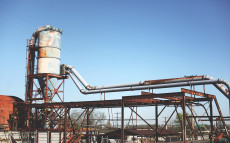- pathfindersAI
- Job Profile
Structural Metal Fabricators and Fitters
Summary
Structural Metal Fabricators and Fitters: A Career Overview
What They Do
Structural Metal Fabricators and Fitters play a pivotal role in the construction and manufacturing sectors. They are skilled tradespeople responsible for constructing and assembling metal structures, which may be used in buildings, bridges, ships, and various other infrastructures. This career demands a high degree of precision and technical know-how, as each structural component must meet stringent quality and safety standards. Through their expertise, they transform raw metal into functional and often monumental pieces of engineering.
Job Responsibilities
The job responsibilities of Structural Metal Fabricators and Fitters are both diverse and crucial. Their tasks typically include reading and interpreting blueprints, cutting and shaping metal components to specified dimensions, and welding or bolting parts together. Additionally, they must align and fit metal pieces according to engineering specifications, ensuring that every joint and connection is secure. Quality control is a significant part of their role; they must continually inspect their work to detect and correct any defects. Furthermore, they are often charged with maintaining and repairing the tools and machinery used in their trade. Safety is also a primary concern, as working with heavy materials and equipment can be hazardous.
Essential Skills
To excel as a Structural Metal Fabricator and Fitter, a wide array of skills is essential. A strong understanding of mathematics and geometry is vital, as the job frequently involves making precise measurements and calculations. Technical skills in welding, cutting, and shaping metal are foundational to the role. Additionally, the ability to read and interpret technical drawings and blueprints is indispensable. Physical stamina and dexterity are also essential, given the physically demanding nature of the work. Communication skills are valuable, as fabricators and fitters often work in teams and need to coordinate effectively with colleagues and supervisors. Problem-solving skills enable them to address and rectify any issues that arise during the assembly process.
Educational Pathways
Embarking on a career as a Structural Metal Fabricator and Fitter typically begins with a high school diploma or GED. Courses in mathematics, technical drawing, and shop classes provide a solid foundation. Post-secondary education, though not always mandatory, can greatly enhance one's prospects. Community colleges and technical schools offer certificate and associate degree programs in welding, metal fabrication, and related fields. These programs combine classroom instruction with hands-on training, providing a comprehensive understanding of the trade. Additionally, apprenticeships present an invaluable pathway, allowing aspiring fabricators to gain practical experience while earning a wage. Certification from recognized bodies, such as the American Welding Society (AWS), can further boost career opportunities by demonstrating specialized competencies.
Career Prospects
The career prospects for Structural Metal Fabricators and Fitters are robust, driven by ongoing developments in construction, manufacturing, and infrastructure projects. According to the U.S. Bureau of Labor Statistics, employment in this field is expected to grow at a steady rate. Opportunities abound in various sectors, including commercial and residential construction, shipbuilding, and transportation equipment manufacturing. With experience and additional training, many fabricators advance to supervisory or management roles or specialize in a specific type of metalwork. The median annual wage for metal fabricators is competitive, with potential for higher earnings based on experience, location, and industry specific demands.
Conclusion
The career of a Structural Metal Fabricator and Fitter is both challenging and rewarding. These skilled tradespeople are integral to the creation of essential infrastructures and the advancement of various industries. With a blend of technical prowess, physical skill, and problem-solving ability, they turn raw materials into tangible, enduring works. Those interested in pursuing this career path will find numerous educational avenues and a promising job market awaiting them. By committing to continual learning and skill development, aspiring fabricators can unlock a world of professional opportunities and contribute significantly to the built environment.
Video
Compensation
| State | Median Salary | Median Hourly | Positions |
|---|---|---|---|
| AL | 45,940 | 22.09 | 2,220 |
| AK | 59,730 | 28.71 | 140 |
| AZ | 47,050 | 22.62 | 540 |
| AR | 41,870 | 20.13 | 950 |
| CA | 52,870 | 25.42 | 2,670 |
| CO | 50,000 | 24.04 | 620 |
| CT | 55,530 | 26.70 | 520 |
| DE | 39,040 | 18.77 | 150 |
| FL | 47,140 | 22.66 | 2,150 |
| GA | 47,300 | 22.74 | 1,030 |
| ID | 50,480 | 24.27 | 420 |
| IL | 45,290 | 21.77 | 2,480 |
| IN | 45,990 | 22.11 | 2,470 |
| IA | 48,350 | 23.25 | 760 |
| KS | 49,000 | 23.56 | 870 |
| KY | 50,570 | 24.31 | 940 |
| LA | 52,990 | 25.48 | 1,380 |
| ME | 52,230 | 25.11 | 840 |
| MD | 45,770 | 22.01 | 520 |
| MA | 60,130 | 28.91 | 1,050 |
| MI | 49,690 | 23.89 | 2,210 |
| MN | 49,420 | 23.76 | 1,320 |
| MS | 45,970 | 22.10 | 730 |
| MO | 43,920 | 21.11 | 430 |
| NE | 43,370 | 20.85 | 660 |
| NV | 45,400 | 21.83 | 240 |
| NH | 50,400 | 24.23 | 330 |
| NJ | 54,430 | 26.17 | 1,050 |
| NM | 49,110 | 23.61 | 70 |
| NY | 46,870 | 22.53 | 1,760 |
| NC | 46,540 | 22.38 | 1,800 |
| ND | 48,480 | 23.31 | 160 |
| OH | 49,530 | 23.81 | 1,430 |
| OK | 44,410 | 21.35 | 860 |
| OR | 52,000 | 25.00 | 1,070 |
| PA | 48,610 | 23.37 | 2,270 |
| RI | 58,240 | 28.00 | 1,620 |
| SC | 45,680 | 21.96 | 970 |
| SD | 47,290 | 22.73 | 200 |
| TN | 46,020 | 22.12 | 1,740 |
| TX | 48,150 | 23.15 | 6,940 |
| UT | 47,230 | 22.71 | 1,110 |
| VA | 49,650 | 23.87 | 1,410 |
| WA | 52,370 | 25.18 | 1,220 |
| WV | 45,260 | 21.76 | 270 |
| WI | 51,110 | 24.57 | 3,110 |
| WY | 46,750 | 22.47 | 30 |
Similar Occupations
In this area you will find other occupations that are close to the one you were viewing in tasks, knowledge and work environment. If the primary job profile you are viewing isn't quite to your liking, take a look around and see what else is available.
Basic and Premium Accounts have more alternative occupations available than the Free account.

Aircraft Structure, Surfaces, Rigging, and Systems Assemblers - 51-2011.00
Aircraft Structure, Surfaces, Rigging, and Systems Assemblers are responsible for constructing, assembling, and installing the mechanical components and systems of aircraft according to blueprints, specifications, and quality standards. They ensure the structural integrity and functionality of the aircraft through precise assembly of surfaces, rigging, and integrated systems, including electrical and hydraulic components.
-
$61,240/yr
Median Pay -
29,810
Number of Jobs

Boilermakers - 47-2011.00
Boilermakers are skilled tradespeople who construct, assemble, maintain, and repair large containers that hold gases or liquids, such as boilers, tanks, and vats. They work with heavy-duty tools and equipment, often in industrial settings, to ensure these structures operate safely and efficiently.
-
$71,140/yr
Median Pay -
11,130
Number of Jobs